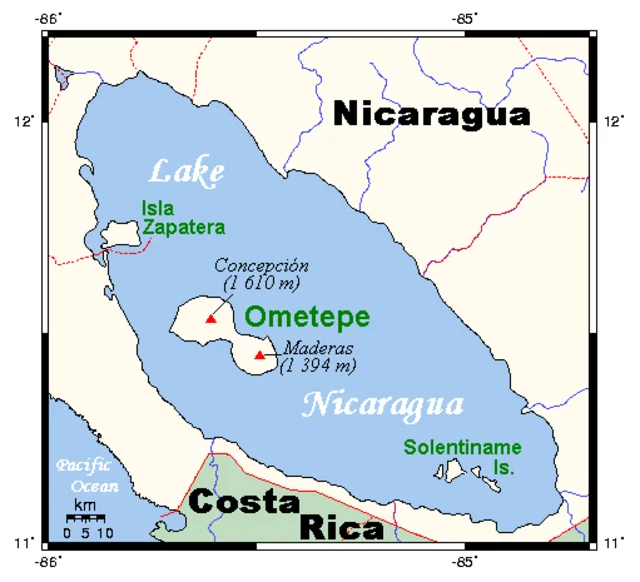Zapatera Island, located in Lake Nicaragua, is home to one of Central America’s most significant collections of petroglyphs. These ancient carvings provide insight into the cultural and religious practices of the region’s early inhabitants. The island’s importance as an archaeological site cannot be overstated, as it holds hundreds of petroglyphs dating back over a thousand years.
Get your dose of History via Email
Historical Context
The petroglyphs on Zapatera Island are attributed to the Chorotega people, an indigenous group that thrived in Nicaragua before the arrival of the Spanish in the early 16th century AD. Archaeological evidence suggests that the carvings date from around 500 AD to 1200 AD. The Chorotega were skilled artists and craftsmen, and the petroglyphs reveal their deep connection to religious and cosmological beliefs.
Description of the Petroglyphs
The petroglyphs feature a variety of motifs, including human figures, animals, and geometric designs. Some carvings depict what appear to be shamans, engaged in ritual activities, while others show jaguars and birds, which were important symbols in Mesoamerican culture. The geometric designs may represent celestial bodies or natural elements like water and mountains, reflecting the Chorotega people’s understanding of the world around them.
Religious and Ritual Significance
Many scholars believe that Zapatera Island served as a ceremonial center for the Chorotega. The sheer volume of petroglyphs and the island’s isolated location suggest that it was a place for religious rituals, possibly linked to ancestor worship or the veneration of deities associated with nature. The carvings likely played a role in these ceremonies, serving as spiritual symbols or guides for practitioners.
Archaeological Excavations
The first detailed study of Zapatera’s petroglyphs began in the late 19th century. Swedish archaeologist Carl Bovallius documented many of the carvings during his expeditions in the 1880s. Since then, numerous researchers have examined the island’s archaeological importance. However, much of the island remains unexplored, leaving room for future discoveries.
Preservation and Threats
While Zapatera Island remains a critical site for understanding pre-Columbian Nicaragua, its preservation faces several challenges. Erosion, weathering, and the impact of tourism pose risks to the petroglyphs. Efforts to protect and conserve the site are ongoing, but further initiatives are necessary to ensure the longevity of this invaluable cultural heritage.
Conclusion
The petroglyphs of Zapatera Island offer a unique window into the lives and beliefs of the Chorotega people. As a ceremonial and artistic hub, the island holds significant archaeological value. Continued research and preservation efforts are essential to protect this important legacy for future generations.
Source:

